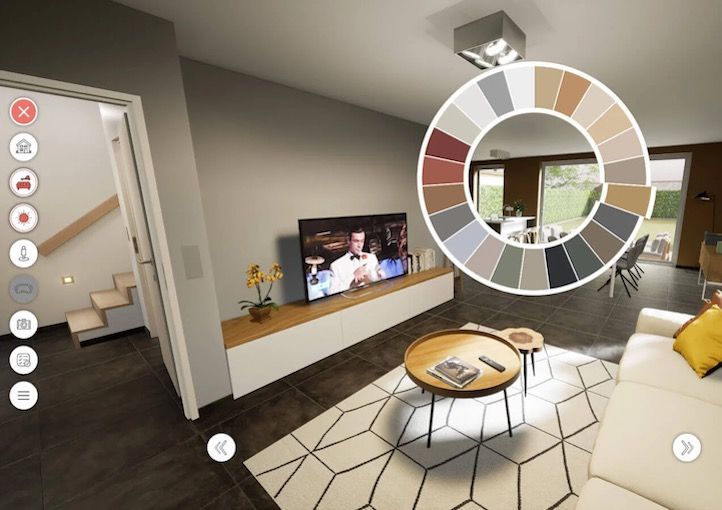Deploying Real-Time 3D Applications: WebGL or Cloud Rendering?

Sharing 3D images is notoriously high maintenance. Throw in the need for real-time interactivity and that enthusiastic scream turns into a defeated whisper: “3D tech would be nice, but loading this file while I’m still young would be nicer.”
The good news is, it’s getting easier to create, share, and manipulate 3D images. As broadband infrastructure and speeds improve, streaming is becoming a lot easier.
Related Read: 4 limitations of WebGL for publishing real-time 3D
Today, companies sharing interactive 3D experiences on the web for marketing, digital engagement, and product development have two main options:
- Web deployment through WebGL
- Web deployment through cloud rendering and streaming applications
Over the past few years, WebGL has grown in popularity as an API for sharing 3D images. That said, it faces fierce competition in the form of cloud-based 3D rendering and streaming solutions that now have the underlying conditions to compete. In fact, the conditions are so great that companies like Google and Sony are betting on the future of cloud gaming.
And as we know, wherever the gaming industry goes, the rest of the 3D industry follows.
For more on real-time 3D, check out our post "What is Real-time 3D (and why the future of digital depends on it)" covering its benefits, top industries and frequently asked questions.
The pros and cons of web deployment of 3D models through WebGL
Direct integration into most major web browsers
Most of the major browsers, such as Google Chrome and Mozilla Firefox, support WebGL. This alone endeared the internet to WebGL by freeing developers from plug-ins like Flash, the web’s soon-to-be extinct bugbear. Through the WebGL API, users could easily take advantage of their local GPU to render and share 3D images.
Local rendering and model entry can be overpowering
For some, the introduction of WebGL was kind of like taking a deep breath only to take a step and be winded again. While its browser ubiquity made it convenient, the necessary mooching of the user’s GPU made it a burden. Even if a designer had the GPU to whip up their 3D magic, there was no guarantee that their audience had the computing power to properly view it. If you’re simply sharing a few models between friends, this is easily overlooked. On the other hand, if you’re a multinational engineering firm whose teammates work remotely off thin clients, this hinders your ability to have productive conversations about your 3D models.
Less expensive option, but there are limitations on the model’s fidelity and security
WebGL is a cost-effective solution, but it requires 3D models to be transferred to the web browser. This presents two critical limitations: one in terms of security and the other in terms of fidelity. Since a company’s models must be transferred to the browser, this proprietary information is more susceptible to unauthorized third-party access. On the flip side, cloud streaming applications store models in the server, enhancing security. Moreover, since viewers must run the models in their browsers, content creators are forced to keep the models small, so they can run on a wide range of devices, effectively limiting a model’s functionality and fidelity (image quality). In addition, load times can increase significantly based on the size.
Check Out: 6 reasons why PureWeb is the most powerful streaming platform for real-time 3D
The pros and cons of sharing 3D models through cloud rendering and streaming
Delivers high fidelity project renderings without local high-end GPUs
Whether you’re a household gamer, a startup with a remote tech team, or a multinational engineering consulting firm, cloud rendering and streaming democratizes 3D model sharing. Previously, it was almost impossible to share 3D content through the cloud. Today, remote servers with powerful GPUs handle the intensive processing work while a proprietary application, like the one powering PureWeb Reality, allows users to view and interact with a full fidelity model from any personal device.
Cloud streaming is higher-cost and latency sensitive, but delivers more value
Cloud streaming is expensive, because of the cost of running GPUs in the cloud. Latency is also a factor that can impact the performance of a cloud streaming solution. That said, cloud streaming delivers higher value by giving customers access to the full fidelity model. PureWeb’s Reality application provides the best experience possible for users through our proprietary solutions, making it easier to collaborate on business critical projects or impress prospects. Additionally, our Reality streaming solution is designed to support multiple users on same GPU, making overall consumption costs cost-effective.
Source data remains secure while rendered image is transferred
For entrepreneurs or large enterprises, protecting proprietary data is essential. In highly specialized industries where there are only a few players, the slightest differentiation can make or break a product’s competitiveness. Whereas web deployment through WebGL requires local rendering, a cloud-based streaming solution like Reality keeps the source file secure by transferring only the rendered image.
For enterprises, it’s about finding the most effective tool for sharing
When picking between two tools, it’s never an apples to apples comparison. Rather, it’s about understanding what your unique needs are and which tool is most equipped to address them.
It’s like choosing between a razor and a kitchen knife to tackle a five o’ clock shadow. Sure, an adroit barber could give you a close shave with a kitchen knife, but he’s probably better off using a razor.
Similarly, WebGL and cloud rendering are both effective ways of sharing 3D content, but their comparative effectiveness depends on the project. If your overall goal is to rapidly share high-fidelity interactive 3D graphics to any device and location, a cloud-based solution provides the flexibility and support required to do so.
Learn more about the PureWeb Reality platform and developer toolkit here or contact a member of our team for a demo.


